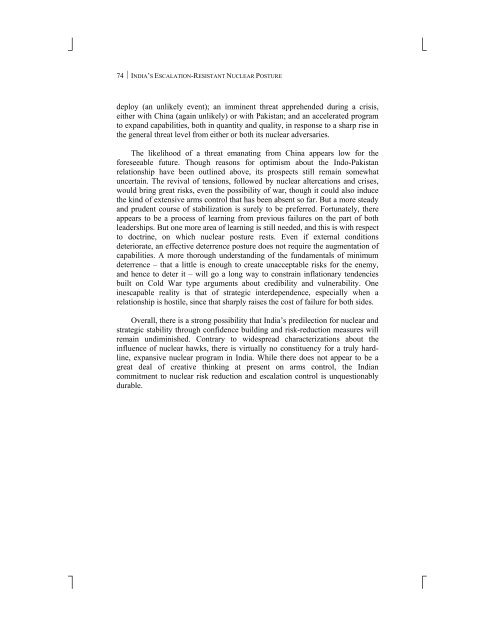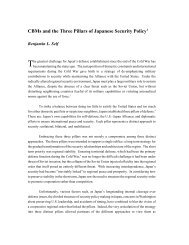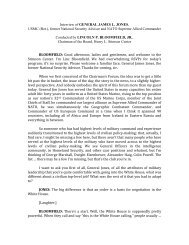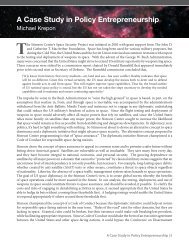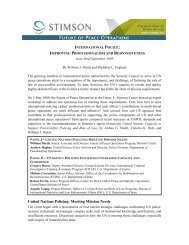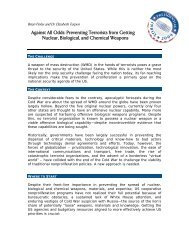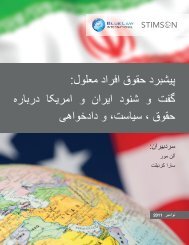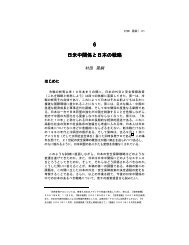India's Escalation-Resistant Nuclear Posture - The Stimson Center
India's Escalation-Resistant Nuclear Posture - The Stimson Center
India's Escalation-Resistant Nuclear Posture - The Stimson Center
Create successful ePaper yourself
Turn your PDF publications into a flip-book with our unique Google optimized e-Paper software.
⎦<br />
⎣<br />
74 ⏐ INDIA’S ESCALATION-RESISTANT NUCLEAR POSTURE<br />
deploy (an unlikely event); an imminent threat apprehended during a crisis,<br />
either with China (again unlikely) or with Pakistan; and an accelerated program<br />
to expand capabilities, both in quantity and quality, in response to a sharp rise in<br />
the general threat level from either or both its nuclear adversaries.<br />
<strong>The</strong> likelihood of a threat emanating from China appears low for the<br />
foreseeable future. Though reasons for optimism about the Indo-Pakistan<br />
relationship have been outlined above, its prospects still remain somewhat<br />
uncertain. <strong>The</strong> revival of tensions, followed by nuclear altercations and crises,<br />
would bring great risks, even the possibility of war, though it could also induce<br />
the kind of extensive arms control that has been absent so far. But a more steady<br />
and prudent course of stabilization is surely to be preferred. Fortunately, there<br />
appears to be a process of learning from previous failures on the part of both<br />
leaderships. But one more area of learning is still needed, and this is with respect<br />
to doctrine, on which nuclear posture rests. Even if external conditions<br />
deteriorate, an effective deterrence posture does not require the augmentation of<br />
capabilities. A more thorough understanding of the fundamentals of minimum<br />
deterrence – that a little is enough to create unacceptable risks for the enemy,<br />
and hence to deter it – will go a long way to constrain inflationary tendencies<br />
built on Cold War type arguments about credibility and vulnerability. One<br />
inescapable reality is that of strategic interdependence, especially when a<br />
relationship is hostile, since that sharply raises the cost of failure for both sides.<br />
Overall, there is a strong possibility that India’s predilection for nuclear and<br />
strategic stability through confidence building and risk-reduction measures will<br />
remain undiminished. Contrary to widespread characterizations about the<br />
influence of nuclear hawks, there is virtually no constituency for a truly hardline,<br />
expansive nuclear program in India. While there does not appear to be a<br />
great deal of creative thinking at present on arms control, the Indian<br />
commitment to nuclear risk reduction and escalation control is unquestionably<br />
durable.<br />
⎤<br />
⎡


